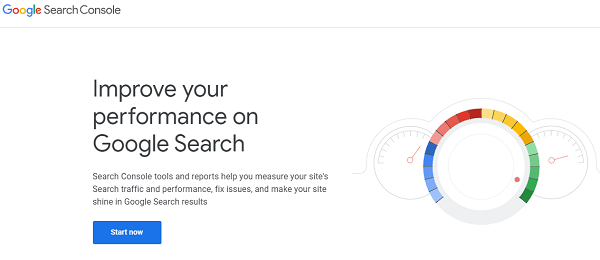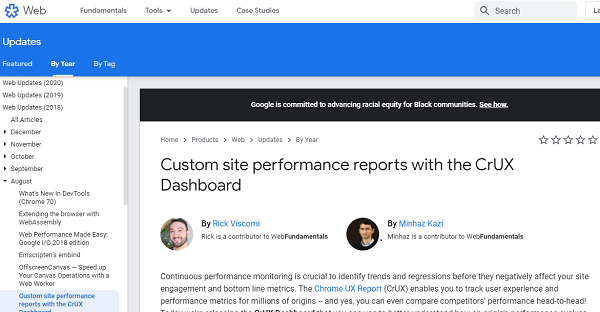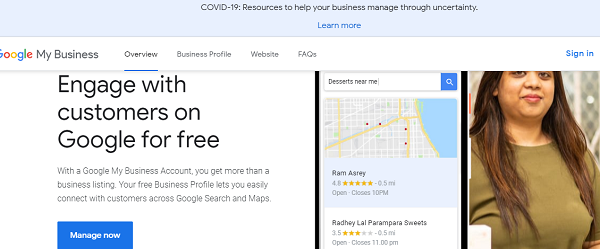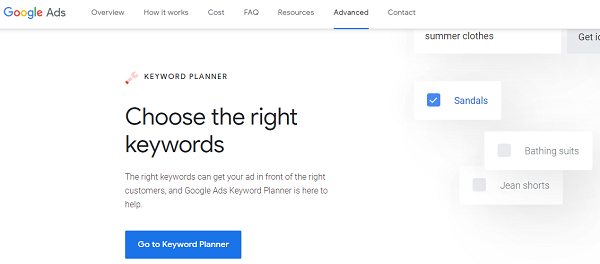
Advanced SEO technologies have changed the landscape of digital marketing. Nowadays, web search is solely based on mobile, executed using machine learning algorithms. Marketers need to adopt fast-changing SEO strategies and techniques to improve business growth. SEO strategies can be different types that can be used as the most focussed approaches to addressing the business brand.
Advanced SEO Strategies
Advanced SEO Strategy: Conducting the website SEO audit
Advanced SEO Strategy: Research consumer requirements
Advanced SEO Strategy: Establishing the SEO-optimized landing pages
Advanced SEO strategy: The usage of AdWords copy in the on-page search engine optimization
Advanced SEO Strategy: Insertion of multiple keywords in the page titles of SEO
Advanced SEO Strategy: Monitoring the statistics of the Google Search Console

Advanced SEO Strategy: Updating the existing content regularly
Advanced SEO Strategy: Refurbishment of old blog articles to find the potential traffic
Advanced SEO Strategy: Mobile-first indexing is the most preferred one
Advanced SEO Strategy: Speedy optimization of the website
Advanced SEO Strategy: Launch the mobile-friendly website
Advanced SEO Strategy: Make use of the most advanced SEO in-depth internal linking
Advanced SEO Strategy: Send the links to low-ranking web pages
Advanced SEO Strategy: Keep high domain authority by linking to external websites
Advanced SEO strategy: Catch the broken links on Wikipedia in building the links
Advanced SEO Strategy: Be on the competitional edge by using the competitor SEO keywords
Advanced SEO Strategy: Expand the website traffic with infographics
Advanced SEO Strategy: Optimizing the website content for the RankBrain
Advanced SEO strategy: Try to write articles that contain more than 2000 words
Advanced SEO Strategy: Write the all-around post for your business
Advanced SEO Strategy: Uploading the most valuable social media content

Advanced SEO Strategy: Controlling Google’s CrUX report

Advanced SEO Strategy: Finding the SERP space
Advanced SEO strategy: Use the video content as the king of your business website
Advanced SEO Strategy: Updating the Google My Business listing is essential

Advanced SEO Strategy: Comparison of keywords is the most significant
Advanced SEO Strategy: Immersing dynamic parameters for the pagination is required.
Advanced SEO Strategy: Make use of podcasts to build backlinks.
Advanced SEO Strategy: Furnace the content alliance
Advanced SEO Strategy: Maximization of SERPs for Real Estate
Advanced SEO Strategy: Embedding the original images on the content is required.
Advanced SEO Strategy: Keyword-relevant content optimization is required.
Advanced SEO Strategy: Creating the comments section on the website is necessary.
Advanced SEO strategy: Use the people also to ask for keywords.
Advanced SEO strategy: Make your web page contain content features.
Advanced SEO Strategy: Publishing the topic and year website content is essential.
Advanced SEO Strategy: Building the business brand with linkless brand mentions
Advanced SEO Strategy: Know how to use the Google Search Console
Advanced SEO Strategy: Listing the products on Amazon is mandatory.
Advanced SEO Strategy: Build creative and engaging link-building
Advanced SEO Strategy: Use journalist keywords.
Advanced SEO Strategy: Enhance the time on the website by using the animated images
Advanced SEO strategy: The creation of content hubs
Advanced SEO Strategy: Find the backlinking from the unlinked brand mentions.
Advanced SEO Strategy: Optimization for Google Discover
Advanced SEO Strategy: Use Reddit to get low competing keywords.
Advanced SEO Strategy: Visualization of sitemaps
Advanced SEO Strategy: Tracing the hidden keywords from the Google Keyword Planner

Advanced SEO Strategy: Re-optimization of the old website content
Advanced SEO Strategy: Enhance your business website by using the advanced technical SEO
Advanced SEO Strategy: Launch the brand reputation
Advanced SEO strategy: The acceleration of web page speed is essential
Advanced SEO Strategy: Short and sweet content is significant.
Advanced SEO Strategy: Find the dead links to the competitor web pages.
Advanced SEO Strategy: Adding the schema markup to the relevant web pages
Advanced SEO Strategy: Repurposing the new and old content
Advanced SEO Strategy: Go through the crawling and indexation guide.
Advanced SEO Strategy: Check the website speed and security.
Advanced SEO strategy: Concentrate on featured snippets, voice search, structured data, and mobile SEO
Advanced SEO Strategy: A strategic keyword and content creation approach is essential.
Advanced SEO Strategy: Link building and backlinks establishment are the most required.
Advanced SEO Strategy: Know the black hat SEO Vs. White hat SEO
Advanced SEO strategy: Focus on the website URLs, structure, and internal links
Advanced SEO strategy: Create a blog post with at least one image, video, or infographic and link to it from your website
Advanced SEO Strategy: Use keywords in the title of your blog post that is relevant to the content
Advanced SEO Strategy: Include links to other articles on your site within the text of your article
Advanced SEO Strategy: Include links to any products you’re selling on Amazon or eBay within the text of your article
Advanced SEO Strategy: Add social media buttons (e.g., Facebook share) at the top and bottom of each blog post
Advanced SEO Strategy: Include keywords in the first sentence of every paragraph on your page
Advanced SEO strategy: Make sure to optimize for mobile devices, including responsive design and AMP pages
Advanced SEO Strategy: Link to other relevant pages on your site from each page you create
Advanced SEO Strategy: Use keyword-rich titles and meta descriptions
Advanced SEO Strategy: Optimize your site with keywords throughout the content
Advanced SEO Strategy: Include a sitemap on your website to tell search engines what pages are available
Advanced SEO strategy: Submit your website to search engines such as Google, Bing, Yahoo!, and Ask Jeeves for indexing
Advanced SEO Strategy: Link back to other websites that you find valuable to build relationships and increase traffic
Advanced SEO Strategy: Include links to other sites that are relevant to your content
Advanced SEO Strategy: Optimize for mobile devices by making sure the text is readable on a small screen
Advanced SEO Strategy: Create infographics with valuable information, share them on social media, and link back to your site
Advanced SEO Strategy: Add a sitemap to increase site visibility
Advanced SEO Strategy: Optimize images with titles and ALT text
Advanced SEO Strategy: Create an XML sitemap for Google’s use
Advanced SEO Strategy: Keep your meta description under 160 characters
Advanced SEO strategy: Create a sitemap for every store you have and submit it to Google Webmaster Tools
Advanced SEO Strategy: Add alt tags to all images on your site with descriptive words that are related to the image’s content
Advanced SEO Strategy: Include keywords in your page titles, headings, and content
Advanced SEO Strategy: Optimize pictures with the correct tags for search engine results pages (SERPs)
Advanced SEO Strategy: Keep up to date on Google’s algorithm updates so that you can adjust your SEO strategy accordingly
Advanced SEO Strategy: Use social media platforms like Facebook and Twitter to promote your site
Advanced SEO Strategy: Blog regularly about topics related to your industry or company
Advanced SEO strategy: Create a site map to optimize navigation on your website or blog
Advanced SEO Strategy: Link out to other relevant websites and blogs for more exposure
Advanced SEO strategy: Submit posts to article directories that are related to your niche
Advanced SEO Strategy: Use social media to build authority, increase followers, and generate leads
Advanced SEO Strategy: Add videos to your site that are optimized for SEO purposes
Advanced SEO Strategy: Do link building by creating content on other sites and linking back to yours
Advanced SEO Strategy: Include keywords throughout the page content
Advanced SEO Strategy: Use keyword-rich anchor text for internal links
Advanced SEO strategy: Get your website to rank higher on Google
Advanced SEO strategy: Create content that is engaging and informative but not keyword-stuffed or spammy
Advanced SEO Strategy: Use social media channels like Facebook and Twitter to increase awareness of your business
Advanced SEO strategy: Build a blog with quality posts that provide value to readers
Advanced SEO strategy: Make sure that you have a call to action on every page
Advanced SEO Strategy: Add social media buttons to make it easier for people to share your content
Advanced SEO Strategy: Include images and videos, as these are more likely to be shared online
Advanced SEO strategy: Create a blog or newsletter so that you can provide fresh content regularly
Advanced SEO strategy: Make sure you have a high-quality website that loads quickly and is mobile-friendly
Advanced SEO Strategy: Add social media buttons, including the URL, so that people can share your content on their profiles
Advanced SEO Strategy: Use keywords in your title tags, headings, and images to help search engines categorize your site
Advanced SEO Strategy: Optimize for mobile devices by using a responsive web design that automatically adjusts the layout of your website based on device size
Advanced SEO Strategy: Perform keyword research to find out which words or phrases are most relevant to what you offer so you can make sure they appear on every page of your site
Advanced SEO strategy: Make sure all links lead back to pages on the same domain so people don’t get lost while browsing
Advanced SEO Strategy: Use social media to increase customer engagement and promote your products or services
Advanced SEO Strategy: Optimize your website with keywords so that it ranks higher in search engines
Advanced SEO Strategy: Get reviews from customers to improve the credibility and trustworthiness of the company
Advanced SEO Strategy: Develop an email marketing strategy that will keep past, current, and potential customers engaged
Advanced SEO Techniques To Double Your Search Traffic
Use keywords in your title tags.
Include a keyword-rich meta description.
Optimize your images with the alt tag and filename
Link to other valuable pages on your website from relevant content pages
Add more internal links throughout the site, especially within blog posts and articles
Optimize your website for mobile
Add a sitemap to your site and submit it to Google Webmaster Tools
Use social media to distribute content about your products or services
Get reviews from customers, post them on Yelp, and link back to the original review page on your site
Create infographics that are shareable across multiple platforms like Pinterest and Facebook
Add a sitemap to your website and submit it to Google Webmaster Tools
Get backlinks from high-quality websites in the same niche as you
Create a blog on your website and publish new content regularly
Start using social media to grow your audience
Use keywords correctly throughout your site, including title tags and meta descriptions.
Keep your meta descriptions short and sweet.
Use keywords in the first paragraph of your content to boost search engine rankings.
Include keyword variations within the body of your text
Add a site links section to link out to other websites you’ve created or relevant articles about yourself, products, or services on third party sites that are related to what you do
Create a site map and feed for search engines to crawl
Use keywords in the title, meta descriptions, headings, and subheadings of each page on your website
Include keywords in the content of each page on your website
Make sure that all pages are correctly linked to one another (especially important if you have an e-commerce store)
Submit your URL to various directories such as DMOZ or Yahoo! Directory
Track your rankings
Use keyword research tools to find keywords related to your niche
Optimize titles for search engines and people
Add photos, videos, and infographics relevant to your site’s content or blog post 5. Create a Google+ page that is optimized for SEO purposes with links back to your main website or blog post from within the description field of the profile
Create a sitemap for Google to index your website.
Submit your site to search engines like Yahoo, Bing, and Ask Jeeves
Optimize the images on your site by using keyword tags or alt text that matches the content of the image you are uploading
Link pages together with internal links (links within one page) so that people can navigate more easily around your website
Use keywords in your title and meta description
Optimize your content for search engines by including keywords, using headings, and linking to other pages on the site.
Add social media buttons or links to increase traffic from social networks
Use local SEO techniques like optimizing your page titles with geographic information about where you are located (e.g., “Location-based Web Design Company”)
Include a keyword-rich description of the page on the actual page itself, not just in the HTML code
Make sure you have an XML sitemap to help Google index all your pages properly
Add social media icons to your site so people can easily share what they find with their friends and followers on Facebook, Twitter, etcetera
Create a video explaining your business or product line – these are great for YouTube channels!
Include keywords in the title and subheadings of your blog posts
Use keywords in the first sentence of each paragraph, including variations such as “keyword” and “keywords.”
Include a keyword-rich description for each post on your website’s home page.
Add meta descriptions to all your images (including product pictures) with relevant keywords.
Submit sitemaps to Google Webmaster Tools so they can index content more efficiently.
Final Thoughts
The list mentioned above covers the most advanced and significant SEO strategies. We hope you find and implement new strategic approaches to enhance business growth.
Call: +91 9848321284
Email: connect@kiranvoleti.com



